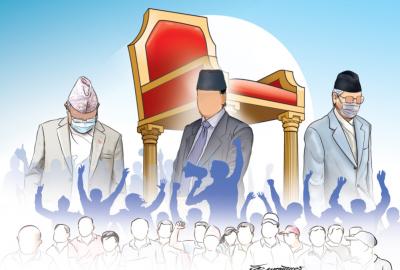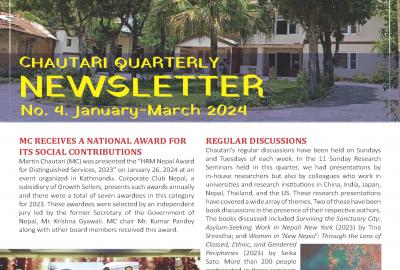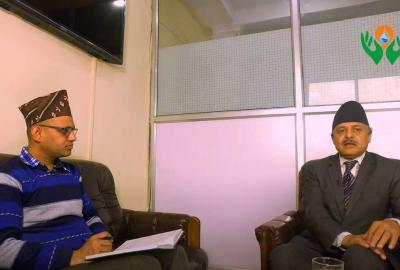With respect to the journal’s aim of becoming a forum for scholars, its performance was moderate.

Kailash: A Journal of Himalayan Studies was launched in 1973 as a quarterly interdisciplinary journal. Its founding editor was the Norwegian lover of the Himalaya, Hallvard K Kuløy, who worked for UNICEF and who had established the Bibliotheca Himalayica book imprint a few years earlier. There were three other members in the founding editorial board: Philip Denwood, a British Tibetologist associated with the School of Oriental and African Studies (his association with the journal was short-lived); Theodore Riccardi, an American Indologist associated with Columbia University; and Boyd Michailovsky who in 1981 completed a PhD in linguistics and subsequently worked for the French national research institute, Centre National de la Recherche Scientifique (CNRS). The journal also had two editorial advisors: Prayag Raj Sharma, a Nepali archaeologist and historical anthropologist who was then the dean of the Institute of Nepal and Asian Studies (INAS) at Tribhuvan University, and Alexander W Macdonald, a Scottish ethnographer at the CNRS who had previously done research in India and Nepal and who was a visiting academic at INAS in 1973. The composition of the founding editorial team was testimony to the fact that studying the Himalaya had become an international interdisciplinary enterprise by the early 1970s.
Kailash was published regularly between 1973 and 1990 with one-year gaps in 1980 and 1986 and with several joint issues in print. In effect, it did not maintain its quarterly frequency and was published only two times a year after 1983. No issues of the journal were published between 1991 and 1994. It was again published during 1995 and 1996. The journal died after a single issue was published in 2000. If that had not happened, we would be celebrating its golden jubilee this year. Instead, this write-up is a belated obituary of a journal that served an important academic purpose when it was alive.
Aims and performance
In Kailash’s first issue, its editors stated the following as its three main objectives: “The basic aims of the journal are to give the younger generation a chance to have their material published and critically discussed along with contributions from the older savants in the field; to serve as a forum for students and scholars from both the East and the West; and to make available in the Himalayas themselves more of the research done on the area.”
All of the three aims were noteworthy. As anyone who is immersed in any field of research can tell, at any given point in time, that field usually consists of three generations of practitioners: The very senior scholars who have done their share of work and are on the verge of retiring; the mid-career academics who are productively active in terms of both research and publications; and early career researchers who have recently finished their formal doctoral studies. As would be obvious to anyone turning the pages of the many issues of the journal, Kailash succeeded enormously in being a forum in which writings of many then neophyte researchers of the Himalaya were published along with those of a few mid-career and senior academics.
With respect to the Kailash’s aim of becoming a forum for scholars from both the East and the West, its performance was moderate. In the later compositions of the editorial team, the journal succeeded on this count. Apart from Sharma, the team included Nepali scholars such as Dor B Bista, John K Locke (who had become a Nepali citizen in 1976 and who was the managing editor for all of the 1980s) and Kamal P Malla at different times. Kuløy, Riccardi, Michailovsky and Macdonald served the journal for its entire life along with J Gabriel Campbell, Per Kværne and Charles Ramble in its later volumes. However, while some native scholars from the Himalayan region did contribute full-length research articles, their numbers were quite small in comparison with those from outside the region.
With respect to Kailash’s third aim, namely, making research on the Himalaya easily available in the region, it was quite successful. The journal was published by the Kathmandu-based commercial publisher Ratna Pustak Bhandar and distributed in the region and beyond through its network. Copies of most of the back issues were still available for purchase from the publisher in Kathmandu in the 1990s.
Geographical coverage
With respect to its geographical coverage, the journal editors had hoped to make it “as broadly based as possible”. However, not surprisingly, the central Himalayan region got the most attention from the contributors and both the Eastern and Western Himalaya got relatively little attention. That this was a lacuna that the editors wanted to redress can be seen from an editorial published in 1987 where submissions of “articles on other areas of the Himalayas besides Nepal” were requested.
Most of the contributors came from social science backgrounds and a few were humanists and natural scientists. Among the contributors, there were many anthropologists. This is again not surprising since by the mid-1970s, there were quite a few anthropologists researching the societies in the Himalaya, especially in Nepal. The early results of their research, when published in a journal produced in the region, were placed in either Kailash or Contributions to Nepalese Studies which was also started in 1973. That anthropologists chose these publications is not surprising given that there were no disciplinary-journals of anthropology published from Nepal until 1987.
Kailash’s editors often complained about the paucity of good articles to carry in the journal. After no issues of it were published in 1980, they apologised “for the long hiatus…due to the lack of suitable materials and delays in the press”. After no issues appeared in 1986, they blamed it on endless delays in “the setting and printing of the journal”. In resuming publication in 1987, they further noted: “We now have improved printing facilities in Kathmandu and can promise a more regular appearance of the journal and a better copy.” The subsequent issues were certainly better in terms of print quality, but the journal became more irregular after 1990. In the last issue that appeared in the year 2000, the editors again mentioned the “scanty flow of acceptable and publishable materials in Himalayan Studies reaching” them. In saying as much, they were being a bit disingenuous as other sets of editors including this writer were putting out journals such as Studies in Nepali History and Society twice a year by then.
What is the legacy of Kailash? As indicated above, it was a pioneering interdisciplinary journal of the Himalayan region editorially prepared by an international group of scholars but produced from within Nepal. It was published under a unique (for Nepal at that time) working partnership between a group of academics and a commercial publishing house. This arrangement demonstrated that once the journal was prepared by the editorial team, the publisher was willing to take the risk of printing and selling it. In other words, the frequently heard excuse from editors of Nepali journals that there is no money to print them had been proven wrong 50 years ago.
Students and early career researchers who have never seen the printed issues of Kailash can now read them online in the Digital Himalaya platform. One of them, hopefully, will write a full-length history of this journal someday.
Published at : August 17, 2023
Source: https://kathmandupost.com/columns/2023/08/17/a-belated-obituary-of-kailash









